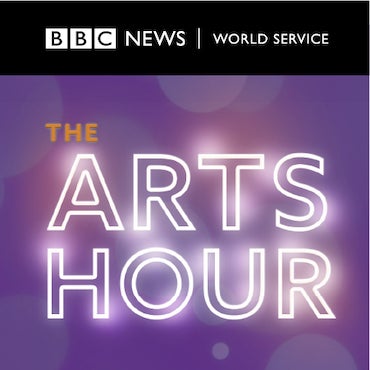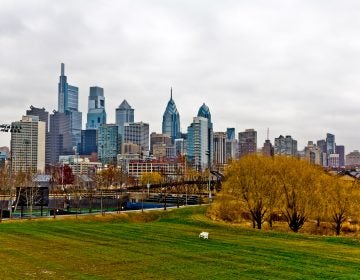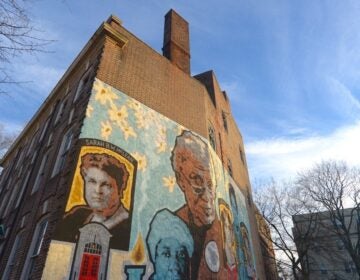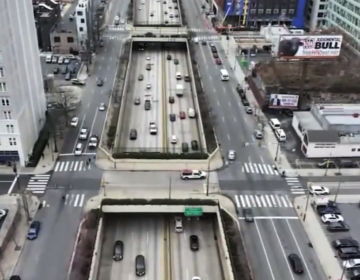From trick-or-treat to traffic tragedy: Here’s the real horror of Halloween
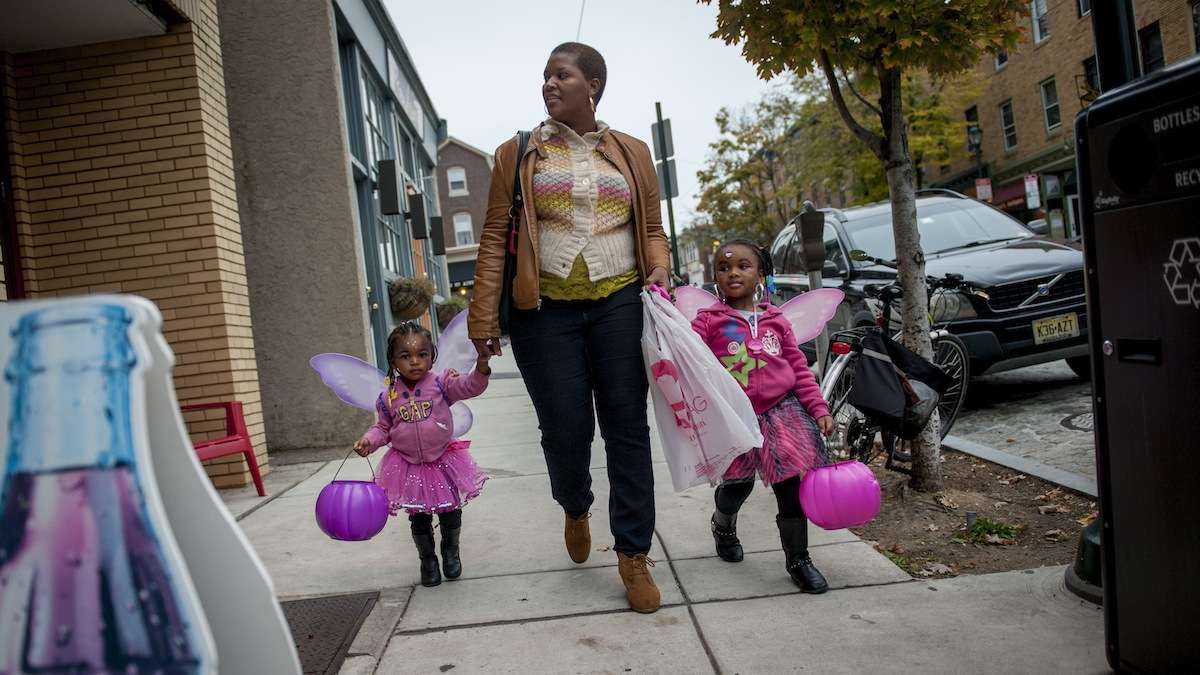
Sharrell Littles, of Mt. Airy, walks with her daughters, LaShae (left), 2, and LaShari, 4, while trick-or-treating on Germantown Avenue Halloween night in 2013. (Tracie Van Auken for WHYY)
In 2016, it was the clown craze. In 2017, rumors of tainted treats. And in 2018, neighborhoods were on their guard against spook-sparked petty crime.
But this year, we’re looking out for a much more pedestrian horror — literally.
Halloween is the deadliest evening of the year for trick-or-treaters. And it’s all because of traffic.
Children are three times more likely to be struck and killed by a car on Halloween than any other day of the year, the Washington Post reported Monday. National highway data shows that 54 pedestrians under the age of 18 were struck and killed by cars on October 31in the years spanning from 2004 to 2018. That’s compared to 16 on a typical day in that same timespan.
City traffic data shows that 892 crashes occurred in Philadelphia in October of last year, more than any other month in 2018. For comparison, crash counts in September and November were 772 and 796, respectively. In 2018, seven crashes involving pedestrians occurred on Halloween across the region,which encompasses Bucks, Chester, Delaware, Montgomery, and Philadelphia counties. There were eight crashes in the region on Halloween in 2017, and 12 in 2016.
The high crash counts aren’t because the streets are suddenly more dangerous on Halloween, or because pedestrians are more reckless, or even because of ghostly interference. It’s an urban design problem.
A JAMA Pediatrics study released early this year notes that “Halloween traffic fatalities are a tragic annual reminder of routine gaps in traffic safety… such events highlight deficiencies of the built environment (e.g., lack of sidewalks, unsafe street crossings), shortcomings in public policy (eg, insufficient space for play), and failures in traffic control (e.g., excessive speed).”
When only a handful of people are walking the roads in residential neighborhoods, where most child pedestrian deaths occur, the problem is less evident. But the consequences of dangerous streets become clear on occasions like Halloween when trick-or-treating brings big crowds out.
The authors of the JAMA study suggest preventing Halloween tragedies with changes in street design that improve pedestrian visibility and promote traffic safety. The study recommends traffic calming and automated speed enforcement along neighborhood streets. But those changes need to last longer than just one night.
“Restricting these interventions to [one] night per year misses the point since year-round application of effective traffic safety interventions will foster much greater progress toward eliminating pedestrian fatalities altogether,” the report explains. “Policymakers, physicians, and parents should act to make residential streets safer for pedestrians on Halloween and throughout the year.”
The National Safety Council’s page on the holiday suggests driving extra carefully on Oct. 31 and always, watch for people dressed in dark clothing.
WHYY is your source for fact-based, in-depth journalism and information. As a nonprofit organization, we rely on financial support from readers like you. Please give today.

